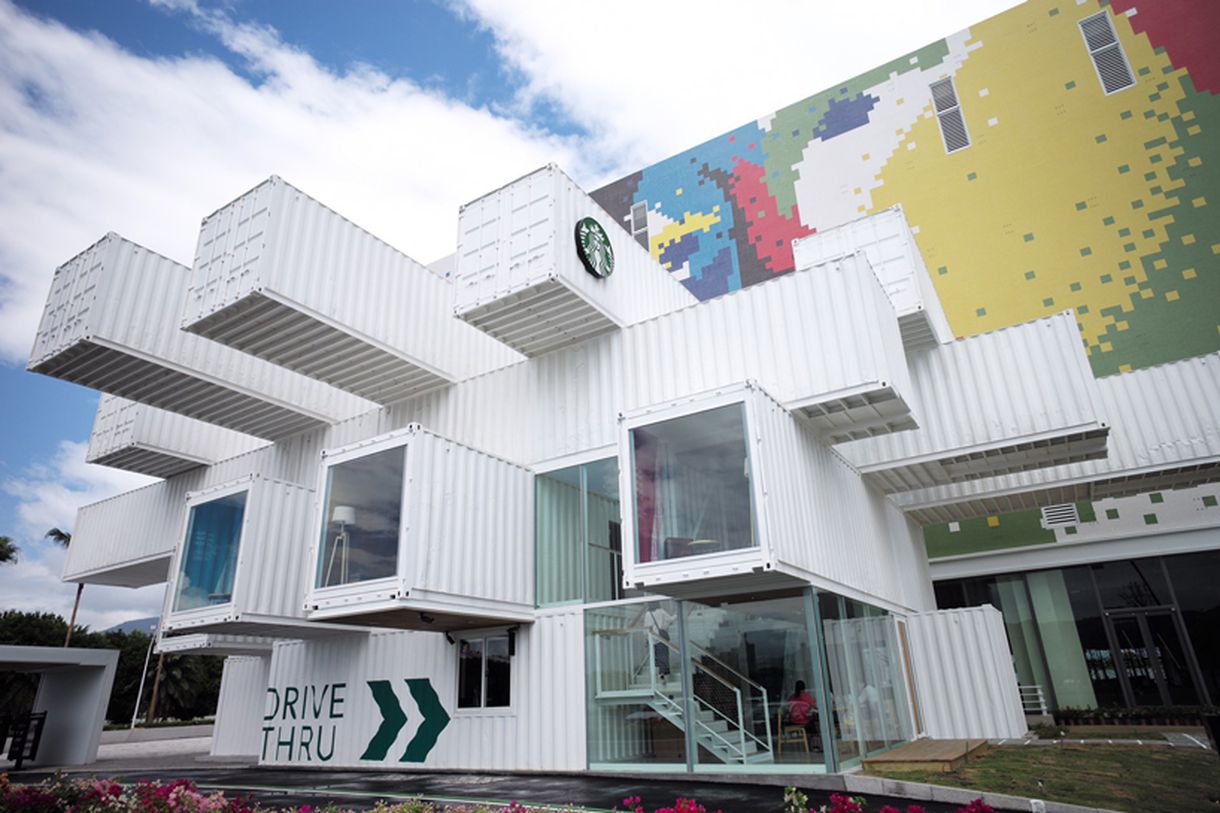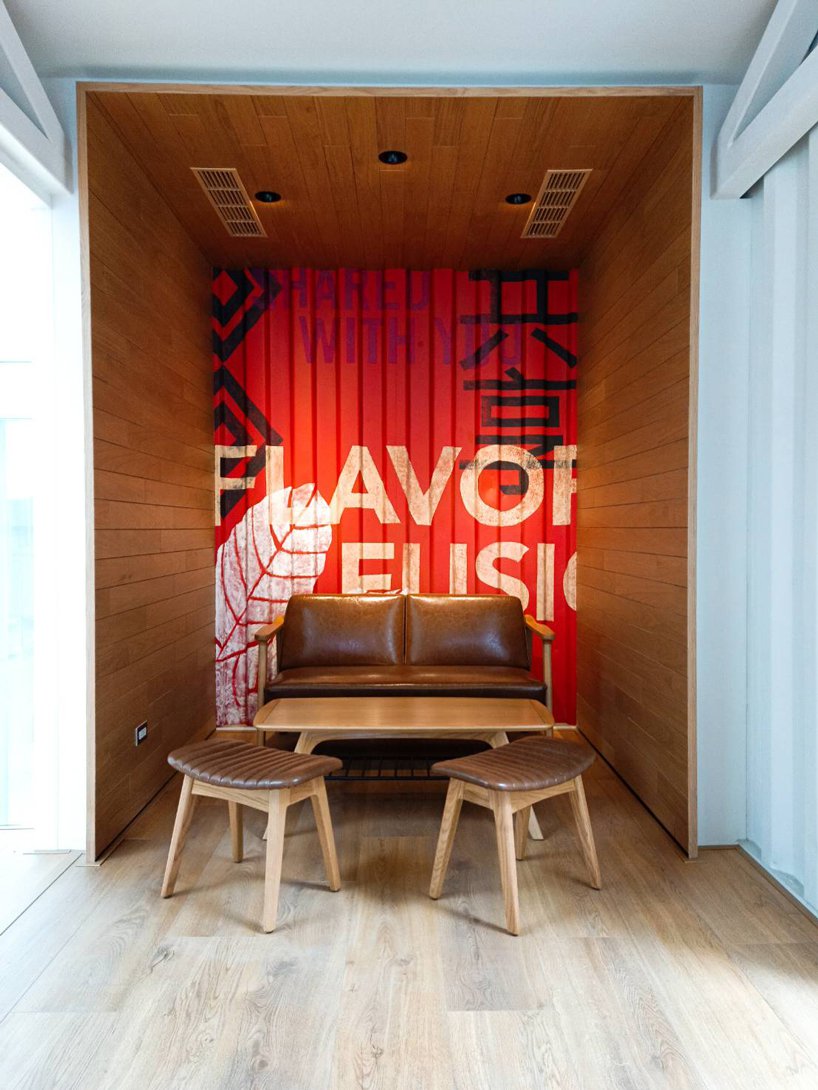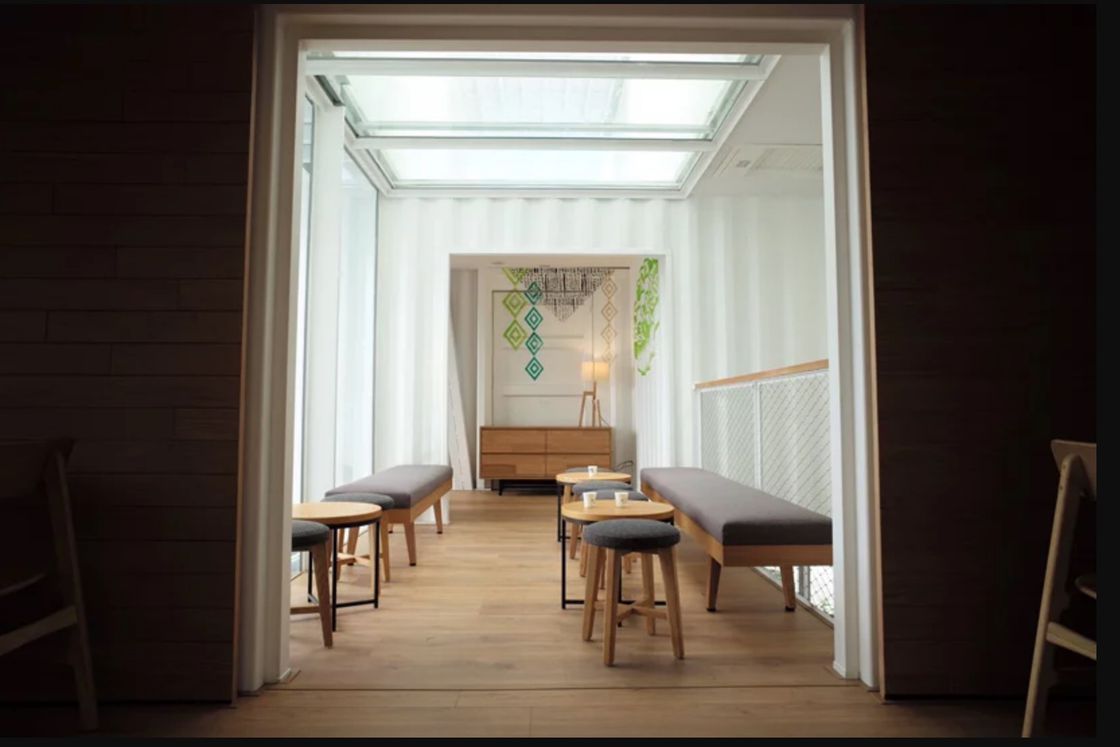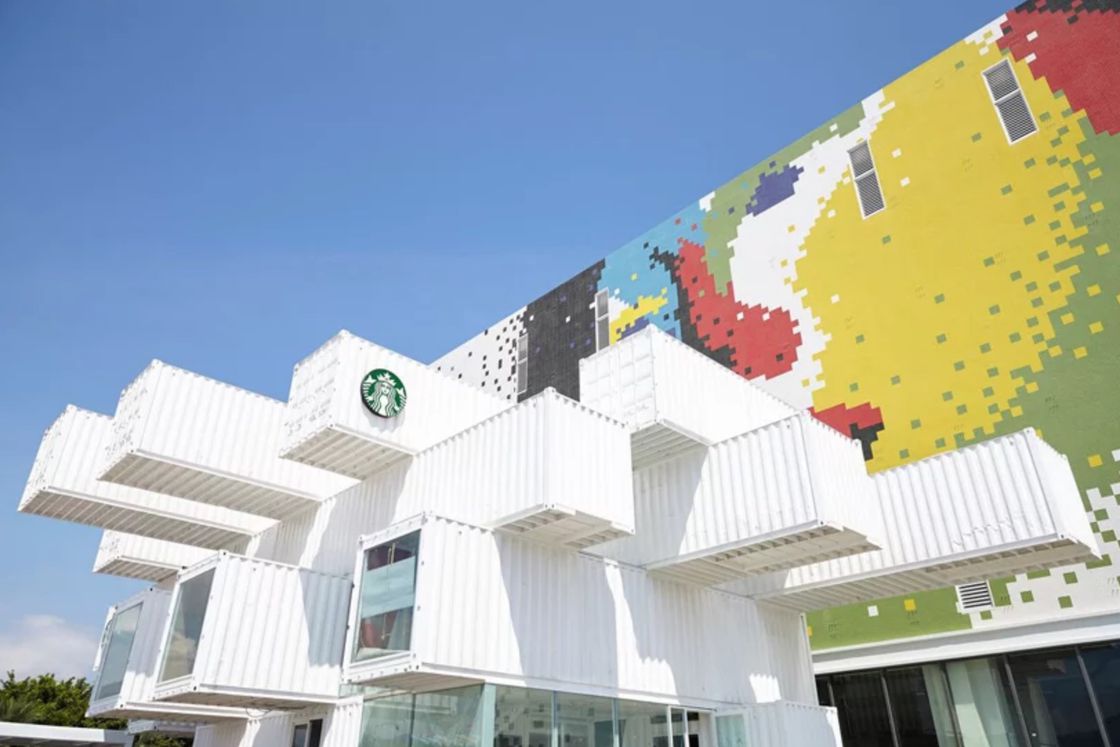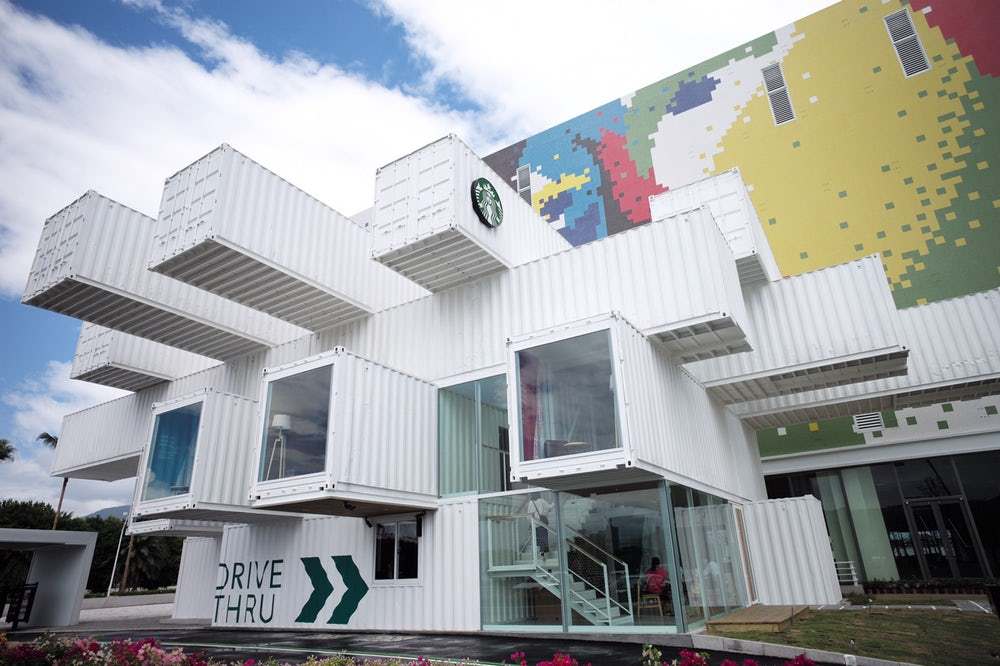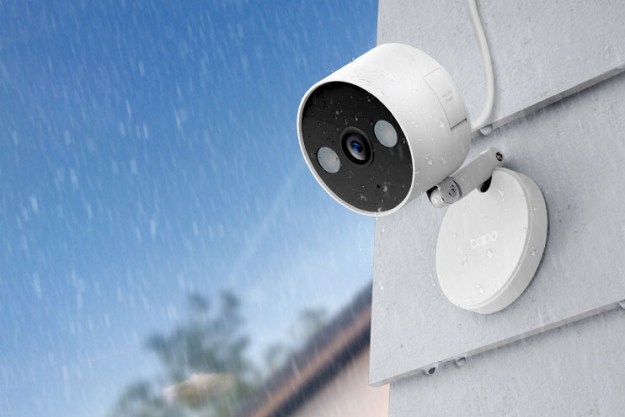Twenty-nine shipping containers are the building blocks for wild-looking new Starbucks at The Hualien Bay Mall, a yet-to-be-opened tourist destination that overlooks the Pacific Ocean in Taiwan. It’s the brand’s 40th shipping container store but Taiwan’s first to be designed by the preeminent Japanese architect Kengo Kuma, who is known for work that seeks to both recover the tradition of buildings and reinterpret those traditions for the 21st century.
Kuma’s team and builders arranged the shipping containers into an angular, two-story edifice complete with a drive-through. In total, the store has a floor space of 320 square meters (3,444 square feet) with an exterior that Kuma says is designed to evoke the uneven foliage of coffee trees, which is an interesting re-imagining given that Starbucks originally used the containers to ship its coffee around the world.
“The stacking of the shipping containers created a much taller space and provides natural sunlight throughout the various skylights found throughout the structure,” the press release notes.
Meanwhile, the interior of the store, which wasn’t designed by Kuma, revolves around a large, colorful wall mural that pays tribute to the cultural history of Hualien by portraying the aboriginal Amis people as well as views of a nearby mountain range.
It’s Kuma’s first Starbucks in Taiwan but far from his first go-round with the coffee company. The renowned architect also built Starbucks Japan’s Fukuoka store and the exterior of the Starbucks Reserve Roastery in Tokyo. The architect was also responsible for the iconic Starbucks Coffee shop at the base of Shaw Tower in downtown Vancouver, British Columbia. Other key projects include the Suntory Museum of Art in Tokyo, the Bamboo Wall House in China, and the upcoming Olympic Stadium being built in Tokyo for the 2020 Summer Games.
“If we could combine Starbucks spirit with the spirit of the artisan, we knew we could create something special,” Kuma has said about his collaboration with the worldwide chain.
The store is a continuation of the “Starbucks Greener Stores” initiative that provides a road map to designing, building, and operating sustainable stores around the world that use reclaimable materials and green design principles.
Editors' Recommendations
- See how well Samsung’s Galaxy S21 Ultra stands up to a razor blade
- PlayStation 2019 Wrap-Up: How to see your year in PS4 gaming
